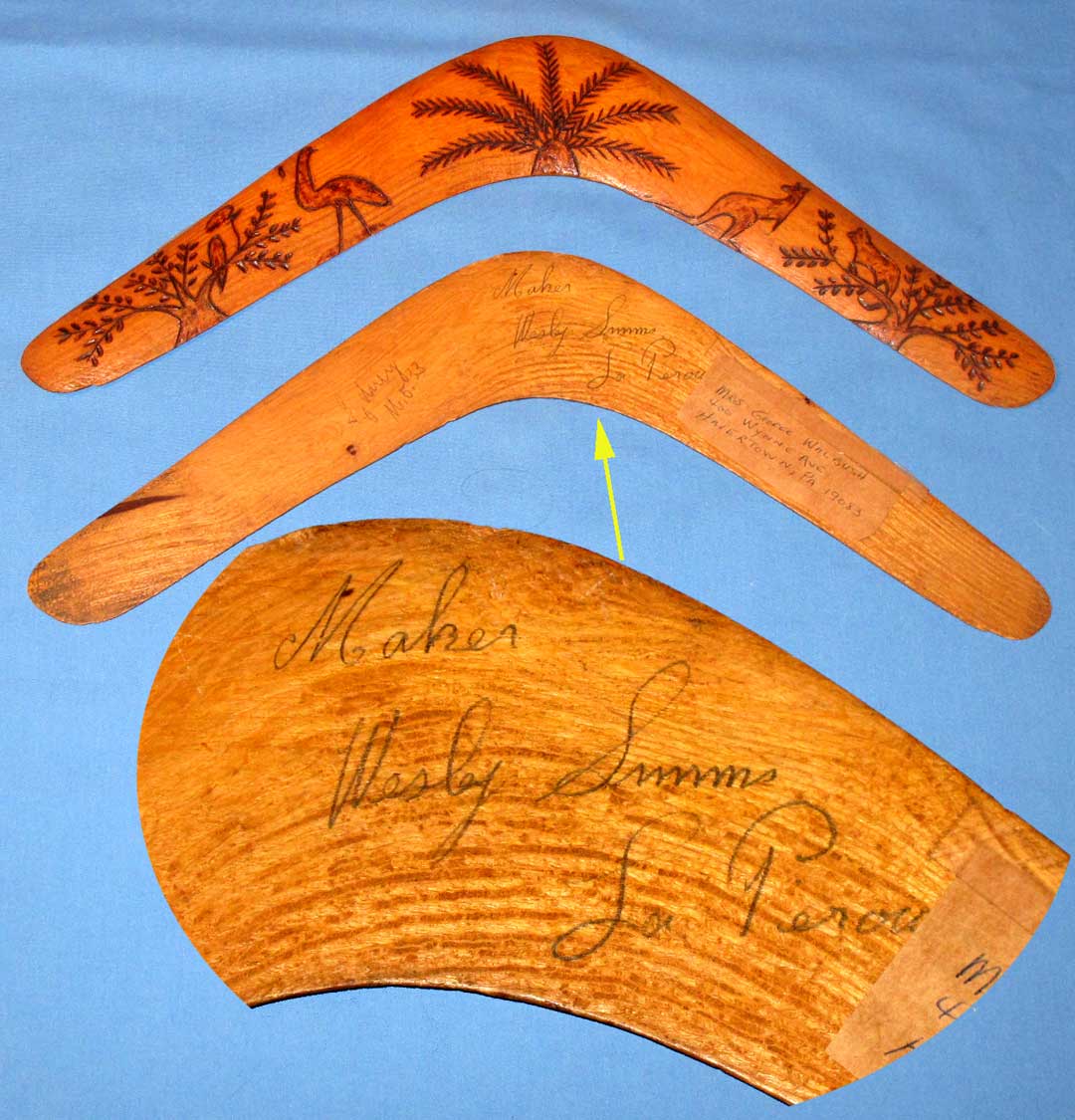Item AG27
This Item was Sold on 30 June 2013
for $76
Similar artifacts for sale are often found on the Aboriginal
Boomerangs web page.
Historical Pricing information for this item and similar artifacts can be found at: Historical Artifact Prices.
|
This returning style Australian Aboriginal boomerang was made in the early 1900s out of a natural elbow with the grain running with the curvature of the boomerang. The craftsman was Wesley Simms, an Aborigine living in La Perouse near Sydney, Australia. The upper surface is decorated with hot poker incised Australian theme art. The reverse side has " Maker Wesley Simms La Perouse " written on the elbow. There is also a paper tag taped to the underside with the previous owner's name and address. This boomerang is part of Al Gerhards' personal collection. It is in very good condition with no cracks, but there is a small edge chip on the underside of the dingle arm tip. This is a valuable collectible that was made for the early Australian tourist market. I did not test throw this boomerang, but it was made for hanging on the wall, not throwing.
Australian Aborigines are well known for making boomerangs. The majority of the Aborigines had the technology to make throwsticks, or non-returning boomerangs. Only a small percentage of the tribal groups knew how to make true returners and most of these came from the eastern coastal regions of Queensland, New South Wales and Victoria. During the past century, the majority of the Aborigines came out of the bush and were somewhat assimilated into the European man's culture. Many Aborigines began making returning style boomerangs to sell to tourists. The earliest ones were well made out of natural timber and with the grain following the curvature of the boomerang. Today, most hardwood boomerang are cut out of a large board and the grain is usually straight and running parallel to a line spanning the tips of the blades. Boomerangs that are made with the grain following the contour of the blades are much stronger and more valuable. In addition, some boomerangs have good airfoiling. The majority do not. Most "tourist boomerangs" have painted upper surfaces that display Australian animals and decorative lines and/or geometric patterns. Most pre-contact returners have no artwork or the artwork is simple and scratched into the surface. It is easy to tell the tourist boomerang from the valuable ethnographic artifact. However, tourist boomerangs that are made properly with the grain running along the contour and with good airfoiling and art work do have good collectable value, especially if they are made by a famous Aboriginal artists like Bill Onus or Joe Timbery. |

How to Order | Back to: Aboriginal Boomerangs | Collectable Artifacts | Historical Artifact Prices | contact: Ted Bailey